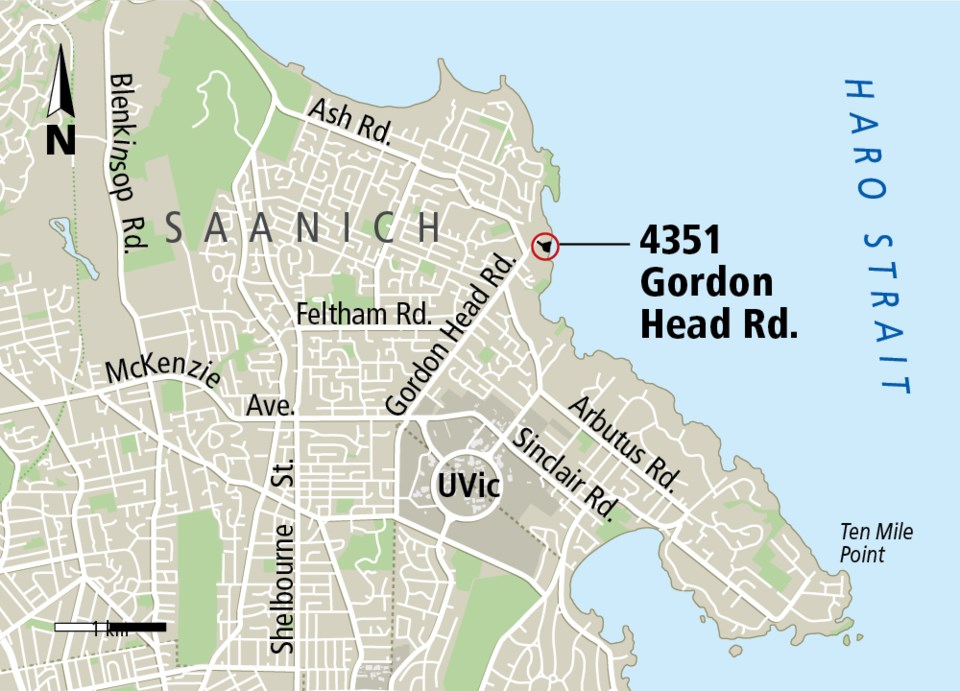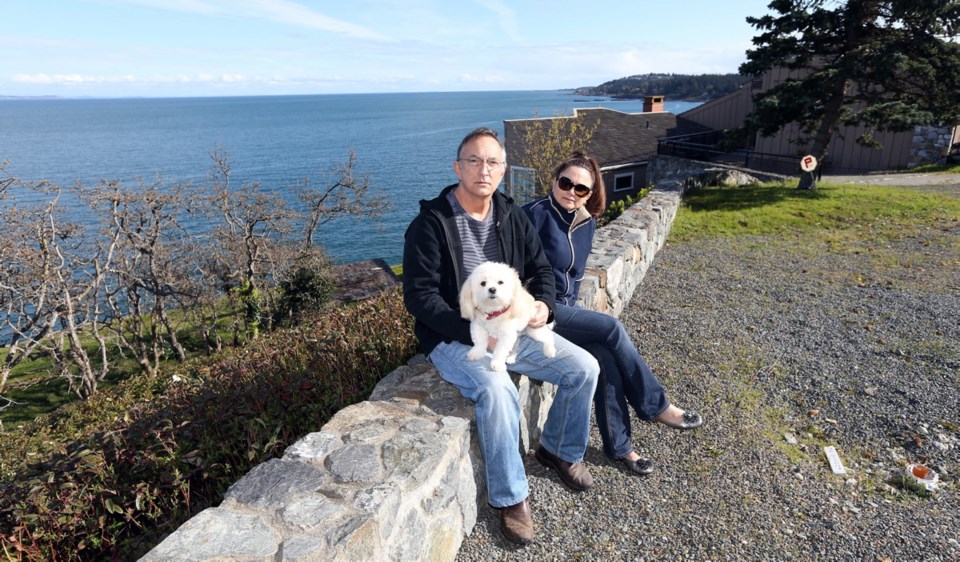A Gordon Head property owner has seen nearly a million-dollar devaluation of his large waterfront property and says the controversial bylaw Saanich enacted to protect sensitive ecosystems is to blame.
On top of the devaluation, Chris Phillips said he is restricted from so much as mowing the lawn on the 65,000-square-foot property that a Saanich environmental manager has declared out of bounds for change without specific written municipal permission.
That’s despite the opinions of two registered professional biologists who have attested it is not a sensitive ecosystem, Phillips said Tuesday, saying his property is replete with blackberry bushes, orchard grasses, Scotch broom and four small Garry oaks — which were already protected under the Saanich tree bylaw.
“We’re talking litigation now,” he said.
The controversial Environmental Development Permit Area bylaw, passed in 2012, is the subject of a special Saanich council meeting tonight called by Mayor Richard Atwell to decide whether the bylaw should be repealed, revised or left in place — but with tweaks.

Atwell tried to have the bylaw scrapped last year, but gained almost no traction.
“I feel that the bylaw in its current forms has been onerous and the unintended consequences are now clear for all to see,” Atwell said Tuesday.
The assessed value of the Phillips property at 4351 Gordon Head Rd. is expected to drop to $754,000 from $1.7 million due to “uncertainty regarding the future development of your land,” said an email to Chris and Charmaine Phillips from the B.C. Assessment Authority.
The Phillips were one of 40 single-family homeowners among an estimated 2,000 in Saanich affected by the EDPA to ask for assessment reviews.
Theirs was the only property that lost value when reconsidered by the property assessment review panel — the other 39 had their original 2016 assessments values confirmed by the review panel.
That’s because of a covenant on the Phillips’ property, said deputy assessor Gerry Marolla of the Vancouver Island region.
Phillips said the restrictive covenant was forced on them as the only way they could get a building permit for a replacement house for the dwelling currently on the property.
“We felt railroaded and cornered, but what option did we have? It was either lose the entire land or give up a large portion so we could at least build our home on it,” he said.
“All the land occupied by the covenant is basically expropriated by Saanich without compensation and there can be no activities in the covenanted area.”
That includes mowing the lawn, pruning trees and removing plants other than invasive species. “No fences, walkways, steps, stepping stones, anything. …There are severe penalties and fines for altering anything in the covenanted area.”
The couple bought the Gordon Head panhandle property one month after the EDPA came into effect and sold their other Saanich waterfront property without ever hearing about the bylaw, Phillips said.
Nothing was mentioned by their lawyer, the real estate agent or the owner. “We’re retired builders and developers so we know the process,” he added.
In a report to council, municipal staff noted that since 2012, staff have processed an average of only eight EDPA applications a year and have advised on “hundreds of exemptions.”
Of 563 applications for building permits for single-family properties last year, 94 were reviewed by environmental staff because the homes were in the EDPA. Of these, 15 required a permit for what they wanted to do.
Many more exemptions were given for sheds, studios or decks outside of the building permit process, the report said. And although feedback was received from open houses attended by more than 550 people, and more than 300 feedback forms were returned to Saanich, “a cursory review of the feedback” showed fewer than 25 per cent of the EDPA property owners participated.
The province specifically gave municipalities the ability to create EDPAs to safeguard the environment, the report said, and EDPAs are the best tool available to protect and restore ecosystems’ vital habitat, protect biodiversity, mitigate damage during construction and restore degraded ecosystems.
A summary from municipal staff said that a cursory review of the feedback shows that residents highly valued protection of the environment but have “significant concerns” about potential financial impacts.
“Improvements to the process, including accuracy of mapping are key to resolving this matter.”



